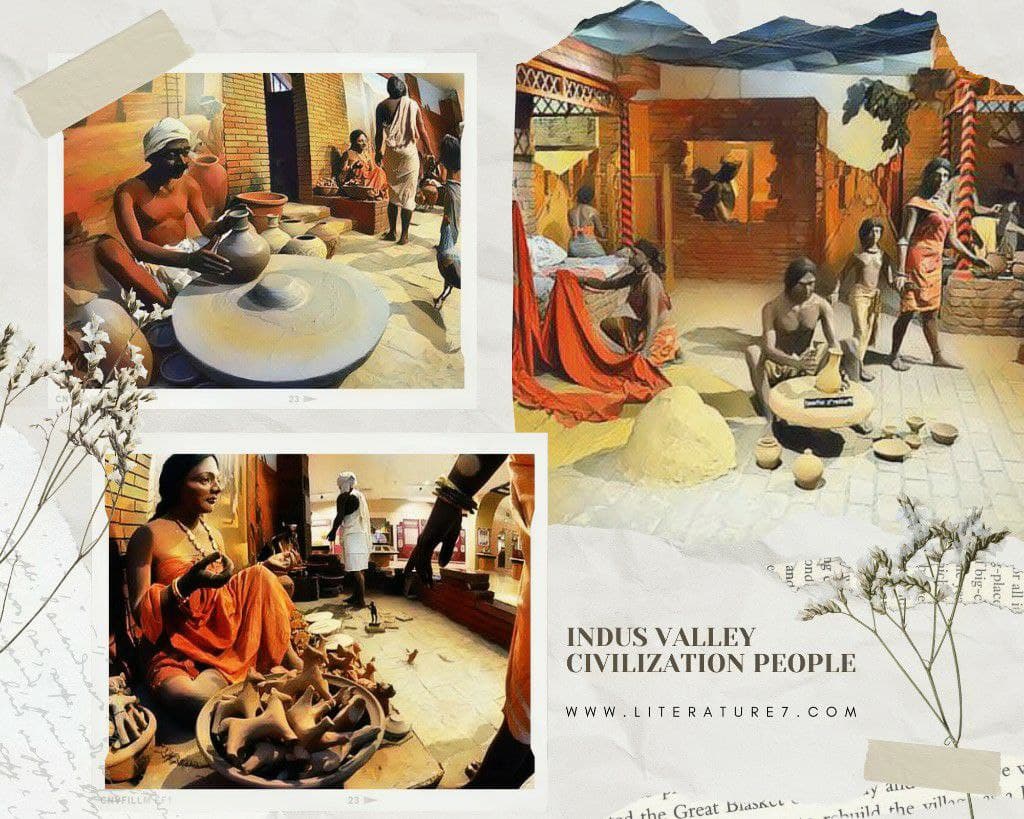Why is Indus Valley Civilization (Harappan culture) called a pre-historic civilization? Discuss some of its important features.

The Indus Valley civilization is one of the world’s oldest civilizations. In the late Neolithic (New Stone Age) and the Chalcolithic (Copper) Age, there are interesting traces from the Indian civilization. Iron hadn’t been known yet. It is called prehistoric culture since there is no written record for that period. We must depend on everyday materials and other Indus people to shape our concept of civilization.
The key characteristics of the Harappan or Indus Valley civilization were:
Seven Mohenjo-Daro layers
The Mohenjo-Daro excavation uncovered seven distinct layers. Under the seventh, there are earlier layers under subsoil water which may drive the ancient civilization further if discovered.
City planning and city life of Indus Valley civilization
This culture developed around cities with remarkable urban planning, drainage, and sanitary facilities. The town was the centre of humanity. The main streets of the town were intersecting from north to south, east to west. The streets varied widely from 9 feet to 34 feet. Lanes were running out of the streets. Street lamps have been provided for public health.
Three groups of homes
the public buildings and big houses were on the roads, and the modest buildings were on the roads. But no building was permitted to invade public roads. Buildings can be classified into three main classes: (a) houses, (b) buildings, and (c) public baths. For construction materials, burnt bricks and sun-dried bricks have been used.
Drainage system of Indus Valley civilization
The complex drainage system is a remarkable characteristic of civilization in the Indus Valley. Houses were drained horizontally and vertically. There were underground street drains. These drains were paved with plates of stone. The soak pits have been built of bricks.
The Great Public Bath of Indus Valley civilization
There is a great Bath in Mohenjo-Daro among the big houses. The total size of the bath is 180 feet by 108 feet. The swimming pool has a depth of 39 feet by 23 feet. There was a piece of equipment to fill and drain the pool’s water.
Food, Dress, and Ornaments
Harappan’s staples included wheat, barley, rice, milk, and vegetables such as peas, sesamon, and fruits such as dates, palms, and so forth. Food such as beef, moth, pork, poultry, fish, and so on has also been consumed.
The people of Indus used cotton and woolen clothing once again. Both men and women used two sets of clothing and long hair, and decorations of gold, silver, and copper with precious stones.
Household items and furniture
Most items were in pottery or in metals such as bronze and copper. Most kitchen equipment were made of earth and stone. The rooms were decorated with chairs, sofas and dressing tables, etc.
Animals domesticated Regarding the Indus Valley livestock, some were domesticated while others were wild. There are also remains of bull, buffalo, sheep, elephant, pig, and camel. Dogs, cats were found, too. Also found were wild animals like rhinoceros, tigers, bison, etc.
Military Aspects
Various weapons, including axis, shield, knife, bows, arrows, etc., were discovered during the excavations. The shortage of defensive weapons is one of the stirring features of the Indus civilization.
Indus religion
Among the remains of the Indus valley, there is a striking absence of any temple. But by finding various terracotta figures, it has been found that the people of Indus adored Mother Goddess, Shiva, Pasupati, Shiva Linga, etc. Probably worship of the people of Indus for animals, trees, fire, water, and sun.
Indus Valley
The people of the Indus Valley were Australoid, Mediterranean’s, Mongols, and Alpines. The cosmopolitan nature of the population confirms that the Indus Valley has been the meeting place for different races.
Entertainment, The finding of marbles, balls, and dice, reveals that they have been used for sports. The general entertainment of the citizens was the hunting of wild animals, bullfighting, fishing, and clay patterns.
Indus Script
The Indus script is now uncovered and closed to scholars. The written direction is from right to left and, in a few cases, from left to right.
